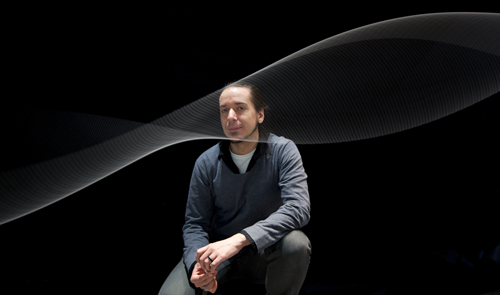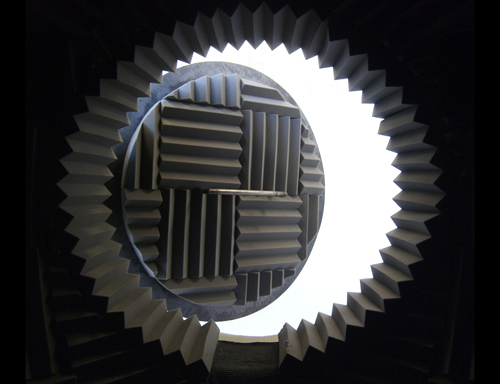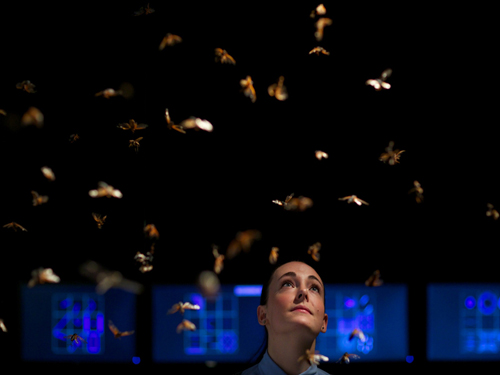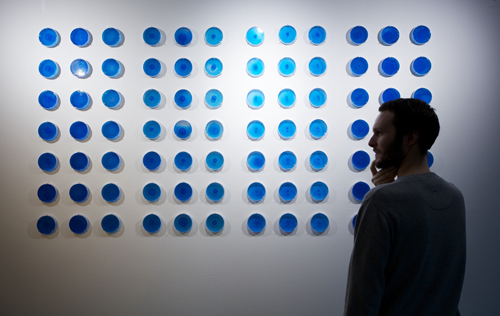Artist Helen Pynor pictured putting together the performance 'The Body is a Big Place' using two pig hearts at the Science Gallery
A new exhibition called Oscillator is opening at Science Gallery in Dublin today to explore the movements, vibrations and cycles all around us. Visitors to the gallery over the next two months will be able to interact with pendulums, step into a box that mimics being inside someone’s mouth and check out the process of heart transplantation via an apparatus that will feature the beating hearts of two pigs.
Oscillation covers anything that vibrates, follows cycles or has a repeating pattern.
Prof Stefan Hutzler from the School of Physics at Trinity College Dublin (TCD), is one of the co-curators of the Oscillator exhibition.
“Oscillation is about vibrations, about things in motion. For a physicist, everything is about oscillation,” he explains.
“If a lorry is passing by then we can feel the air molecules that shake us. Also, on a deeper level, molecules have wave properties, as well. The waves are all around us. What we are doing in this exhibition is we feature certain aspects of oscillation and waves,” says Hutzler.
Visitors to the gallery will see a lot of hanging pendulums, he explains, with the pendulum being the icon of periodic motion.

Artist Daniel Palacios with his exhibit Waves
A chemical experiment will also aim to show chemical oscillation.
“In this case, the chemicals that react will have different colours. Initially, that solution is red and then as the reaction goes on after a few minutes it will turn into blue. Then if you wait a few minutes, it will bounce back into red and then into blue. So you have an oscillation between these two different colours, which reflect the concentration of various chemicals in your system. It’s called ‘chemical clocks’.”
Two beating pig hearts
Tonight, however, Science Gallery members will be in for a treat during the opening of the exhibition, as there will be a performance called ‘The body is a big place’ to restore the heartbeat in the hearts of two pigs.
The installation is being created by Australian artists Peta Clancy and Helen Pynor.
The hearts from two pigs will be obtained from an abattoir this afternoon, explains Hutzler.
He says equipment has been set up in the Science Gallery whereby the hearts will be transplanted into this system and provided with oxygen and nutrients.
“The hearts will start beating again before you can artificially arrest the heart. You can trigger its motion. This will be shown today.”
The apparatus will be on display during the entire exhibition, but the actual performance will just take place tonight.
“A video of the performance will be on display during the exhibition,” adds Hutzler.
Getting stuck in
But, he thinks that parts of the exhibition where people will be able to play around and do their own experiments will be prove to be a major draw.

Dare to step into the ‘Mouth Tank’ to simulate the experience of being inside someone’s mouth?
For instance, visitors will be able to step into a big box and sit there in the dark to hear sounds of chewing noises to stimulate sitting inside someone’s mouth for two minutes.
And, remember when you tried to make a coin spin as a child? For a normal-sized coin that spinning process only takes a few seconds before the coin falls flat.
Hutzler and his team in the Department of Physics created a coin that weights between 2-3kg and is about 25cm in diameter.
“If you spin such a coin then it spins for over a minute. As it slowly starts to settle down the pitch that you hear goes up before it eventually falls down.”
In the gallery exhibit, people can spin this coin and hear the loud noise, which sounds like an engine, as the coin settles.

Science Gallery’s Lucy Whitaker views the exhibit Magicicada, which explores the music of the cicada insect
People can also look forward to a musical performance that celebrates the music of the cicada insect.
“These insects only hatch every 17 years and they produce a peculiar sound,” says Hutzler.
Robotic arms
There will also be a robotic arm installation that creates and responds to microphone feedback.
“It’s a speaker and a microphone. The microphone will pick up the sound of the speaker and feeds that back into the speaker so you create a feedback loop,” he explains.
The speaker and the microphone will be installed on moving arms.
“Once that feedback starts a computer-controlled mechanism moves the speaker away from the microphone, back again and then away again. It looks as if the speaker and the microphone are having a conversation,” he adds.
Other exhibits will include a simple computer that processes a single bit at a rate of one cycle per second to operate a light switch. As well as this, there will be a series of musical pendulums that were first developed as part of the singer Björk’s Biophilia tour.
Oscillator will open at Science Gallery at TCD from tomorrow and will run until 14 April.

The Sound to Shape installation